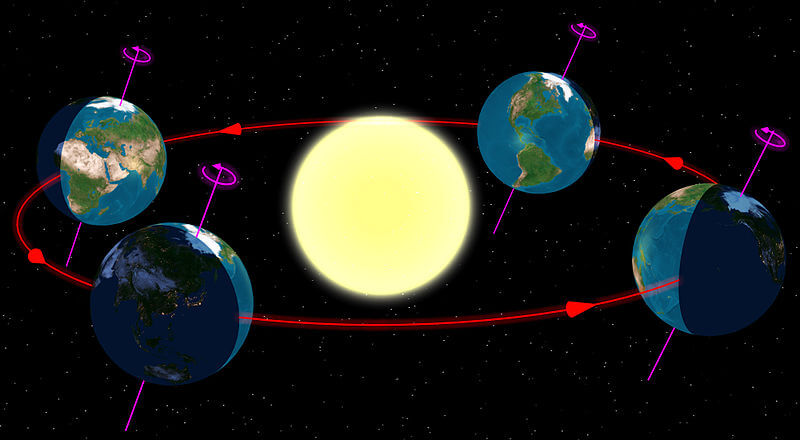A solstice point (in English Solstice) is derived from the words SOL (sun in Latin) and stice (standing still). As the day lengthens the sun rises higher in the sky until it seems to stand still

A solstice point (in English Solstice) is derived from the words SOL (sun in Latin) and stice (standing still). As the day lengthens the sun rises higher in the sky until it seems to stand still.
As a major celestial event, the summer solstice is the longest day of the year and the night after it is the shortest. Residents in the Northern Hemisphere mark the summer solstice on June 21st, while those living in the Southern Hemisphere celebrate on December 21st.
On the day of the solstice, the sun is at its northernmost point, in the constellation Cancer ('23° 27) (this is not to support astrology but to show a landmark like the landmarks on the map. A.B.). Depending on the latitude, the length of the day changes so that in Chicago it lasts (on June 21, 1999) 15 hours and two minutes. As you go north, the day gets longer and the night gets shorter, until in the North Pole region there is light even at night.
The date actually moved in relation to the Gregorian calendar due to the addition of a day in the month of February once every four years except in the year ending in 00 but they do add in the year divisible by 400, the year 2000 was such a year. The jumps range from June 20th to June 22nd.
This astronomical landmark is noted in many places on Earth, but especially at the Stonehenge site where many believers of a religion that claims to be reminiscent of the pagan religions that inhabited the Stonehenge area 3,000 years ago gather. According to tradition, the huge site was built whose heavy stones were brought from a distance of about 200 kilometers so that it would mark the days of the solstice and in particular the day of the summer solstice.
Of course, as you can see in the picture, between the winter solstice and the summer solstice there are equinoxes when the length of the day is equal to the length of the night - March 21 and September 21.
More on:

5 תגובות
Hasir
For more details and an update, please go to the article about the summer solstice of 2015
https://www.hayadan.org.il/summer-solstice-2106159
My father explains so beautifully and simply
simpler than that????
Could a simpler explanation?
Interesting… 🙂